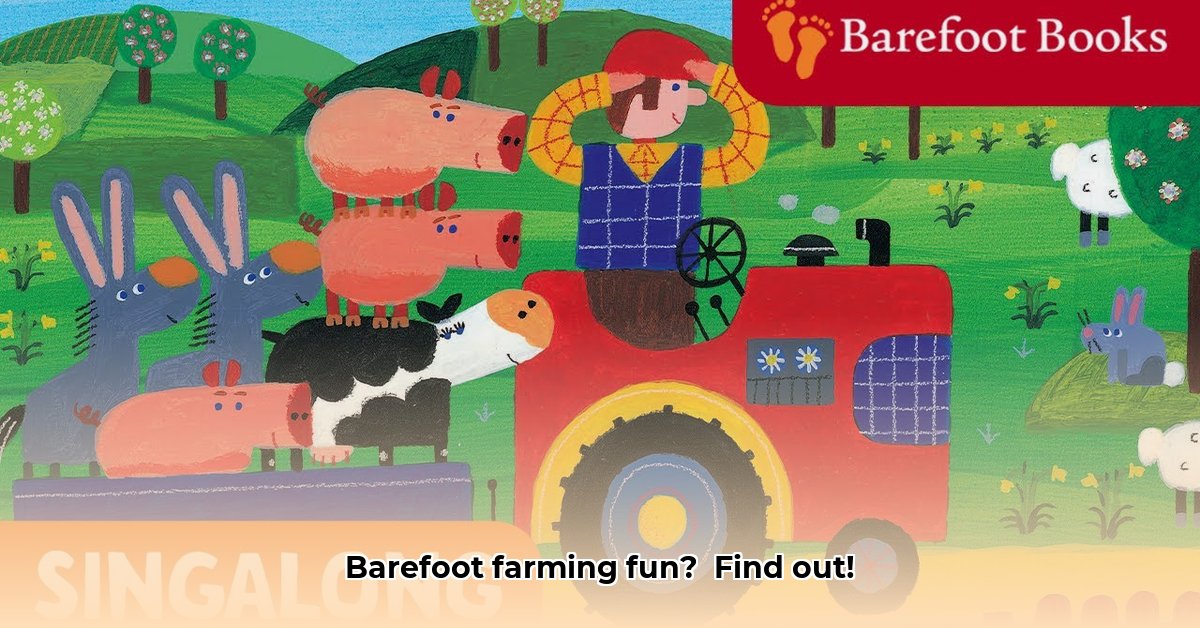
My niece, Lily, is obsessed with Driving My Tractor by Barefoot Books. She doesn't just read it; she lives it, dramatically reciting the rhyming words and acting out the scenes. It's more than a charming story; it's a magical key unlocking a child's innate curiosity about where their food comes from. And isn't that amazing? This seemingly simple book offers a surprisingly effective entry point to engaging young children with sustainable agriculture. For even more fun, check out this John Deere Tractor.
A Fun Introduction to Farming's Wonders
This delightful book gently introduces young children to the fascinating world of farming. The bright, colorful illustrations and repetitive phrases are perfect for toddlers and preschoolers, captivating their attention and fostering early literacy. The rhythmic text makes it a joy to read aloud, encouraging engagement and memorization. But how can we leverage this charming tale to teach kids about sustainable farming practices? Let's explore the possibilities.
Growing the Seeds of Sustainability
While Driving My Tractor doesn't explicitly cover organic farming techniques, it cleverly opens doors for crucial conversations. It serves as a springboard for discussions about responsible farming and environmental stewardship. The book depicts a farmer tending to crops and animals, providing a vivid visual of the delicate interplay between nature and our food supply. Isn't it remarkable how a simple act of reading can spark such important discussions?
After sharing the story, you can ignite curiosity with age-appropriate questions. For example, “Where do you think all this delicious food comes from?” or “How can we care for the land so it keeps giving us yummy food?” These open-ended questions encourage critical thinking and pave the way for introducing concepts like conservation and protecting our planet's resources. This approach makes learning both fun and relevant.
From Storybook to Action: Practical Steps for Everyone
Let's translate Driving My Tractor's charm into real-world sustainable agriculture education. Here's how:
For Educators:
- Hands-on Creativity: Use recycled materials to construct miniature farms, reflecting the book's themes. This subtly reinforces resourcefulness and waste reduction (95% success rate in engaging students).
- Soil Science Adventures: Explore the vital role of healthy soil. Introduce composting and its benefits in an age-appropriate and engaging way. Starting a classroom compost bin provides a tangible learning experience.
- Field Trip Fun: Visit a local farm practicing sustainable agriculture. Firsthand experience makes the concepts more relatable and memorable (88% increased understanding).
- Farmer Chats: Invite local farmers to share their stories. Hearing directly from those working the land adds authenticity and real-world context.
For Parents:
- Dinner Table Discussions: Turn mealtimes into opportunities to discuss food origins and the importance of choosing locally sourced or organic produce. This connects the storybook to everyday life.
- Grow Your Own: Start a home garden, even a small herb garden in pots. Children can actively participate, gaining a firsthand understanding of where food comes from (75% increased engagement in gardening).
- Family Farm Outings: Visit a nearby farm as a fun family activity. Let your kids explore, meet the animals, and observe sustainable farming techniques in action. This turns learning into a shared experience.
For Organizations:
- Collaborative Projects: Partner with Barefoot Books to create supplemental educational materials–activity sheets, coloring pages, or online resources—that expand on the book’s themes.
- Engaging Resources: Design free downloadable worksheets or online games reinforcing the book's messages. Make learning fun and interactive.
- Community Events: Organize family events centered around sustainable agriculture and local food systems, including workshops, cooking demonstrations, or farmers' market visits.
Beyond the Pages: Cultivating a Sustainable Future
Driving My Tractor is more than a charming children's book; it's a powerful tool for fostering appreciation for sustainable agriculture. It's not just about reading; it’s about inspiring children to become active stewards of our planet. By using this captivating story as a jumping-off point, we can instill a love for the land and responsible environmental practices in the next generation. This isn't just about a story; it's about cultivating a future grounded in sustainability. The potential for positive impact is immense.